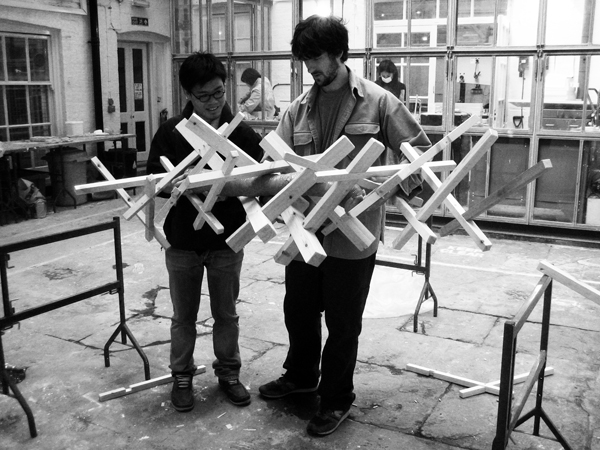Sazaedo Bridge
Sazae-do is a 16.45m hexagonal wooden tower, built in 1795 at the wishes of Ikudo, a Buddhist-priest. The staircase has a double helical form, allowing the visitor to travel up and back down without passing the same point twice. Although formally unique, Sazaedo is structurally typical of traditional Japanese timber construction. Wooden posts and beams are connected using variations of common joining techniques.
Responding to Sazaedo’s double helical form, this triple helix bridge is also comprised of repeating elements whose sizes vary according to a structural hierarchy. The intertwined helical forms of Sazaedo lean in on one another and offer cooperative support, but the elements of this bridge avoid one another completely. Their structural complicity is only evidenced by the cables that reflect the helical form in the opposing direction. Each member is essential to the integrity of the whole yet none rests on any other. The bridge consists of stick structure and void, defining a space within, a volume that implies mass. It is a thin, linear structure that contains a habitable place even without an ‘inside’.

